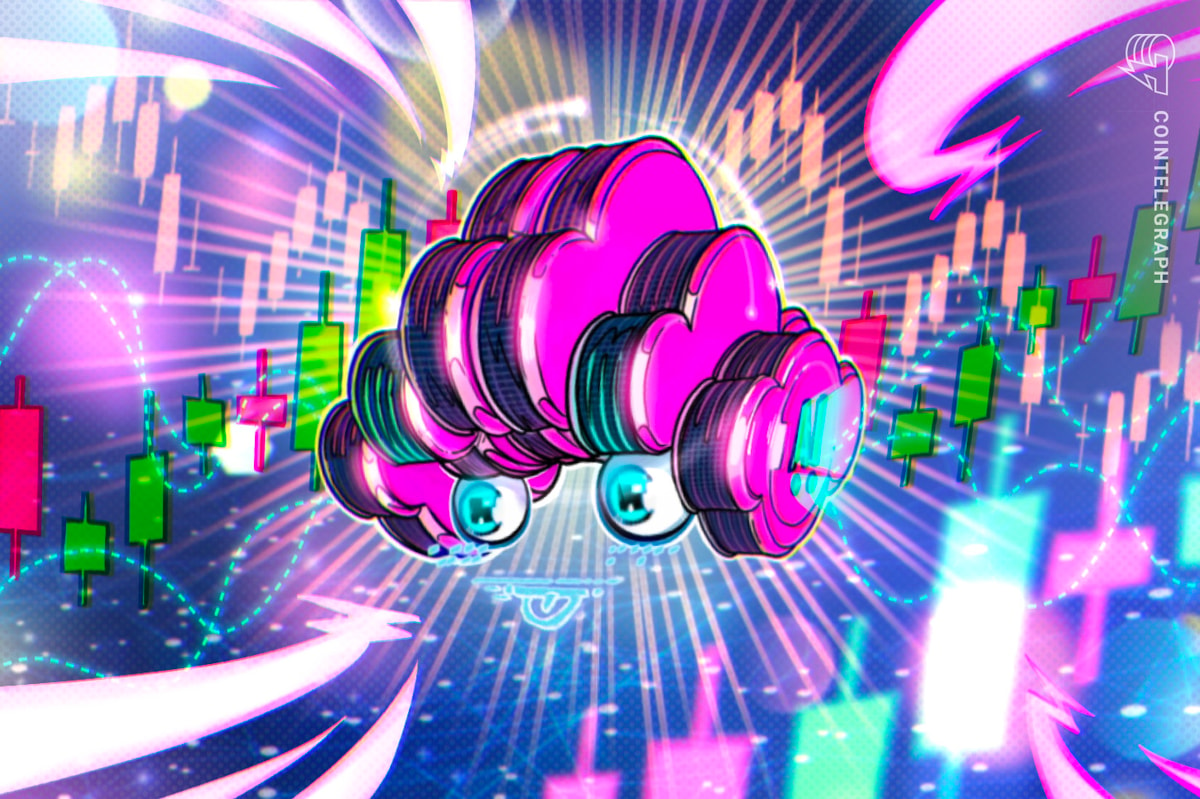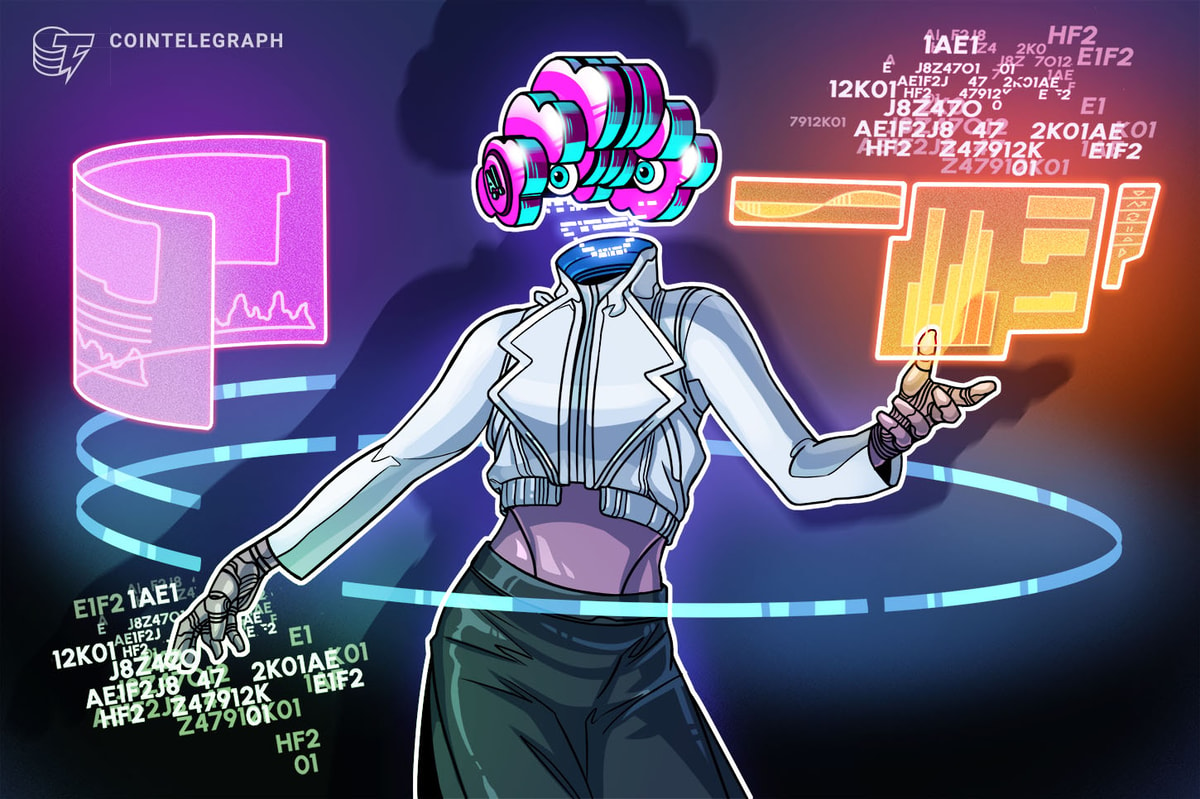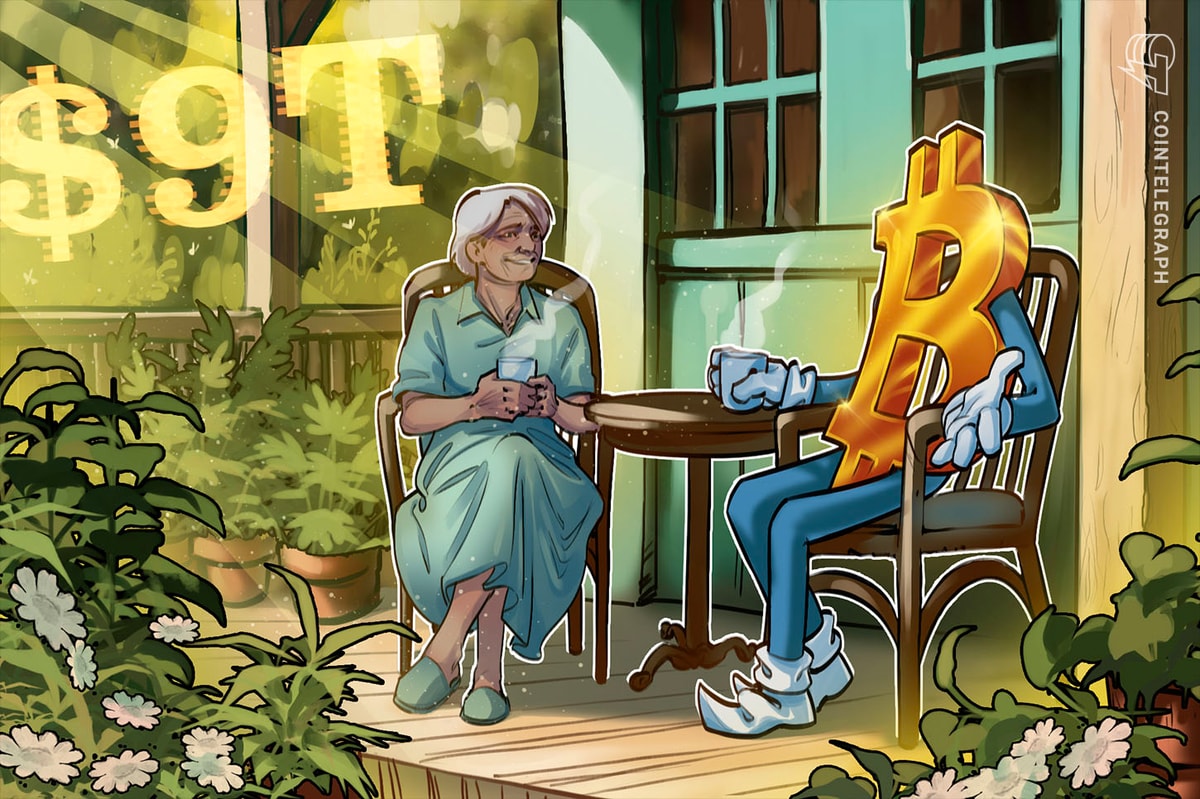Key takeaways
-
Grok scans real-time sentiment on X to detect early crypto trends, including meme coin momentum and macro reactions.
-
Traders have used Grok-style setups to track tokens like TURBO, ORDI and FET before price moves occurred.
-
Unlike chart-based tools, Grok captures emotional tone and crowd narrative shifts across thousands of posts.
-
When paired with ChatGPT, Grok helps surface signals, while ChatGPT assists in strategy design and automation logic.
-
While useful for sentiment parsing, Grok doesn’t execute trades, interpret charts or manage risk — it works best as a signal assistant.
Why Grok is getting attention from crypto traders
Many retail traders still rely on news alerts, influencer posts or Discord trading groups to stay ahead of the market. While these sources can offer signals, they’re often delayed or shaped by social bias. In fast-moving crypto environments, that delay can mean missing the window to act.
Grok, the conversational AI developed by Elon Musk’s xAI and embedded into X, is being explored by some traders as a way to monitor sentiment shifts more efficiently. Unlike traditional tools, Grok has direct access to live X data, enabling it to interpret real-time conversations, track trending token mentions, and detect early signs of narrative movement.
Some developers are testing Grok in conjunction with other AI tools to surface high-frequency mentions or emotional keywords tied to memecoins and altcoins. One post in a crypto dev forum describes an experimental setup where Grok flagged repeated FLOKI mentions from verified users shortly before a price move. While still experimental, these use cases show how sentiment parsing on X can inform short-term trading decisions.
Instead of acting as a trading strategy on its own, Grok is being used as a tool to enhance awareness of market mood, especially for assets driven more by social engagement than fundamentals.
What is Grok?
Grok is a conversational AI model developed by xAI, Elon Musk’s artificial intelligence company. It is currently available to X Premium+ users, where it integrates with the X platform to provide direct access to trending content and public conversations in real time.
Unlike traditional AI assistants like ChatGPT, which rely on processed or external data feeds, Grok can tap into live user discussions, sentiment flows and viral trends as they unfold. This makes it particularly useful for tracking crypto sentiment, especially for assets that react to narrative momentum, including memecoins, altcoins and even Bitcoin (BTC) during key macroeconomic events.
Why Grok matters for crypto traders
Let’s break it down with a real-world scenario:
-
On March 13, 2024, Musk posted a meme featuring Pepe the Frog. Shortly afterward, the price of the Pepe (PEPE) cryptocurrency jumped by 12.2%, breaking the $0.000009 mark. While this timing drew attention, it’s important to note that correlation doesn’t imply causation. The price movement may have been influenced by broader memecoin activity, technical setups or other social factors, not just the meme post itself.
-
By the time the news reached Telegram groups and aggregators, the entry window had already passed.
Now imagine Grok:
-
Reading that influencer’s post instantly
-
Parsing community replies to determine sentiment polarity
-
Matching it to previous patterns of similar pump setups
-
Triggering a “high social spike” alert for meme coins.
Traders have begun experimenting with Grok for sentiment-driven trading setups by connecting it to real-time X data via unofficial APIs or scraping tools. Spikes were defined as a 5x increase in token mentions over a four-hour period across verified or high-engagement accounts, while hints included repeated mentions of partnership rumors, macro triggers or keyword anomalies like “rate cut” or “whale buy” linked to specific tokens.
How to use Grok for sentiment, signals and macro insights
If you’ve traded crypto during a meme cycle, you know how fast sentiment shifts and how slow most tools are to pick it up. Grok changes that. Thanks to its direct integration with X, it can scan thousands of posts, hashtags and comment threads as they happen. When used strategically, Grok becomes a tool not just for reading sentiment but for trading it.
Here’s how crypto traders are starting to use Grok in practical ways.
Sentiment monitoring in real time
Grok actively scans crypto posts on X for market-moving phrases and sentiment anomalies, such as “floor is in,” “massive unlock,” “whale dump” or “rate cut confirmed.” It goes beyond surface-level mentions to decode context, emotional tone and intent in each post.
By leveraging X’s API, some traders are experimenting with Grok to:
-
Track early sentiment in lesser-known tokens before price action begins: In April 2024, mentions of TURBO increased across X, driven by developer discussions and previews of upcoming features. This shift preceded a 22% price rally roughly 36 hours later, suggesting sentiment tools can expose momentum ahead of chart-based signals.
-
Gauge emotional volatility around macro news events: During the March 2024 US Federal Open Market Committee update, Grok-powered setups flagged rising anxiety around BTC. Traders noted that crowd sentiment turned negative before the actual dip occurred, helping some adjust positioning earlier than usual.
-
Spot sentiment divergence, where engagement rises but price lags (or vice versa): In February 2024, community chatter around FET spiked, while the price remained flat. Some early traders used this mismatch as an entry cue, preceding a breakout two days later.
Unlike traditional keyword scanners, Grok applies deep sentiment parsing and real-time X integration, capturing nuance during high-impact events like Consumer Price Index (CPI) drops, exchange-traded fund (ETF) rumors or influencer U-turns.
Below is an example output from a custom sentiment parser built using Grok’s access to X, analyzing 12 posts about Bitcoin (BTC) in a six-hour window. The data set included posts from high-profile accounts like Whale Alert and Michael Saylor, as well as smaller influencers commenting on BTC leverage, short-term trading and macro comparisons. The goal was to measure the emotional and directional tone of real-time crypto sentiment during a volatile trading session.
X feed signal parsing
Thanks to its integration with X, Grok can detect momentum the moment certain content begins trending. Traders experimenting with Grok-like setups use it to:
-
Track token mentions gaining traction, such as sudden increases in usage of a specific ticker (e.g., “$FET” or “$TURBO”) across multiple verified or active accounts within a short window.
-
Monitor influencer activity tied to specific tokens, such as when a high-following account hints at a listing, partnership or price outlook, especially when combined with above-average engagement like repost surges or rapid reply chains.
For example, during a 24-hour window in February 2024, the number of posts mentioning “$ORDI” jumped to over 400 from under 50, led by influential traders discussing potential listings. Grok-style sentiment tools flagged this spike in narrative velocity well before price reflected the attention.
By analyzing these types of real-time social signals, Grok enables users to spot early momentum shifts across crypto communities. This allows traders to evaluate developing narratives while they’re still taking shape rather than reacting after they hit aggregator sites or news feeds.
Macro awareness for high-timeframe trades
Grok AI enables traders to track real-time sentiment around macroeconomic events like CPI releases, interest rate decisions and crypto regulations.
For example, following the December 2024 US Consumer Price Index (CPI) report, which showed an annual inflation rate of 2.9%, Bitcoin briefly crossed $98,500. This movement aligned with market expectations and was interpreted by some analysts as a bullish signal for risk assets, reflecting optimism about potential Federal Reserve rate cuts.
By parsing crowd-level data in real time, Grok often provides a clearer picture of market positioning than traditional headlines. This insight can help traders time capital rotations between BTC, stablecoins or altcoins more effectively, especially when market sentiment shifts rapidly post-macro events.
Grok vs. ChatGPT for crypto trading
Grok and ChatGPT are both AI tools being explored for crypto analysis, but they serve different functions. For traders, analysts or researchers looking to improve decision-making, understanding where each tool fits can help streamline different parts of the workflow.
Grok is integrated with X and is available to X Premium+ users. Its key strength is real-time sentiment parsing. It can track public posts, monitor trending discussions, and flag early signals based on community chatter. This makes it useful for identifying potential momentum shifts tied to market narratives, token mentions or macroeconomic events.
ChatGPT, on the other hand, is more effective for structured analysis. It doesn’t access live social feeds unless connected to APIs or plugins. However, it can explain trading strategies, summarize research and interpret technical indicators based on user inputs. This makes it suitable for backtesting concepts, understanding token mechanics or generating trade logic for bots.
Developers in AI trading communities often pair both tools — using Grok to identify emerging trends from real-time sentiment and ChatGPT to refine strategies, simulate scenarios, or build automation logic around those signals.
Data access: Real-time vs. processed knowledge
Grok has a major advantage when it comes to real-time information. Because it’s embedded directly into X, Grok can scan live posts, community reactions and trending content as it happens. That makes it incredibly useful for:
-
Capturing sudden sentiment shifts
-
Spotting viral token mentions before price moves
-
Reacting to breaking macro or regulatory news.
ChatGPT, on the other hand, doesn’t have live feed access unless you connect it to external tools (like a browser plugin or API). Its strength lies in structured analysis, explaining trading strategies, running conceptual backtests or summarizing white papers.
-
If you need fast input from the crypto crowd, Grok wins.
-
If you need structured insight or technical breakdowns, ChatGPT is your tool.
Sentiment vs. strategy
Grok is particularly effective at analyzing real-time social narratives across crypto communities. It’s ideal for:
-
Crypto sentiment from X
-
Identifying early crypto signals from trending posts and community chatter
-
Identifying memecoin rotations and community-driven pumps
-
Gauging macro reaction in real time.
ChatGPT is more effective for:
-
Writing or debugging trading bots
-
Explaining concepts like liquidation cascades or funding rates
-
Developing AI-powered crypto trading strategies.
For example, the AI4Crypto GitHub repo includes scripts integrating Grok sentiment with backtesting logic via ChatGPT. These experimental setups are becoming more common in open-source quant groups, while ChatGPT is used to draft trading logic or simulate responses. These paired setups are becoming more common in open-source quant groups and AI-based trading experiments.
Speed of deployment
Grok is designed to be reactive. It detects signals the moment they start trending. This has led developers in the crypto automation space to experiment with building auto-trading alerts that respond to Grok-identified sentiment spikes.
ChatGPT, by contrast, requires more setup. Unless integrated with real-time APIs, it works best with questions grounded in historical or static data.
That’s not a flaw — it’s intentional. Grok acts as a market listener; ChatGPT functions as a strategy explainer.
Risks, limitations and what Grok can’t do for crypto traders
As promising as Grok is, it’s important to understand its boundaries. Traders experimenting with AI often run into issues not because the tool is bad, but because they expect it to do everything.
Grok can enhance your workflow, but it’s not a plug-and-play magic signal generator.
No trade execution logic
Unlike a crypto bot connected to an exchange, Grok doesn’t execute trades or manage positions. It can alert you to rising sentiment or narrative shifts, but it won’t know whether your strategy is risk-on or risk-off.
Some traders are building Grok-connected scripts for trade alerts, but these setups still require manual review or pairing with third-party execution platforms.
Bottom line: Grok is a signal scout, not a full-stack trading engine.
No charting or technical indicator awareness
Grok 3 has introduced early-stage support for parsing some market data and basic chart patterns, but it still lacks full technical analysis (TA) capabilities. For precise TA, traders should still rely on tools like TradingView or dedicated bots. That’s a major difference from tools like ChatGPT, which can explain and simulate trading strategies using TA logic.
So, while Grok might tell you, “SHIBA is trending,” it won’t say, “This is a bullish flag on the 4H.” For that, you’ll still need TradingView, CoinGlass or a hybrid AI setup.
Susceptible to noise and manipulation
Because Grok pulls directly from X, it’s reading unfiltered public data, which can include misinformation, coordinated shilling or sentiment spoofing.
During memecoin cycles, it’s common for groups to artificially inflate mentions, hype or fake news. If Grok is used without filtering or human context, it might flag these as bullish signals when they’re just exit liquidity traps.
This is one of the biggest risks of trading with Grok AI: You’re relying on the crowd’s words, not the market’s confirmations.
Limited depth on altcoins
While Grok is strong at identifying trending topics, it struggles when sentiment data is thin. For smaller altcoins with low visibility or limited community discussion, Grok may return weak or irrelevant signals.
Traders using Grok for niche decentralized finance (DeFi) or microcap tokens may get better results by pairing it with crypto technical analysis software or onchain tools like Nansen.
No built-in risk management
Grok doesn’t know your portfolio size, stop-loss level or risk tolerance. It won’t warn you that you’re overexposed, chasing pumps or trading against a trend.
This is where most new traders overestimate AI. AI-powered crypto trading strategies still require a human layer of risk control. Grok might tell you what’s hot, but it’s your job to decide if it’s worth chasing.
This article does not contain investment advice or recommendations. Every investment and trading move involves risk, and readers should conduct their own research when making a decision.








